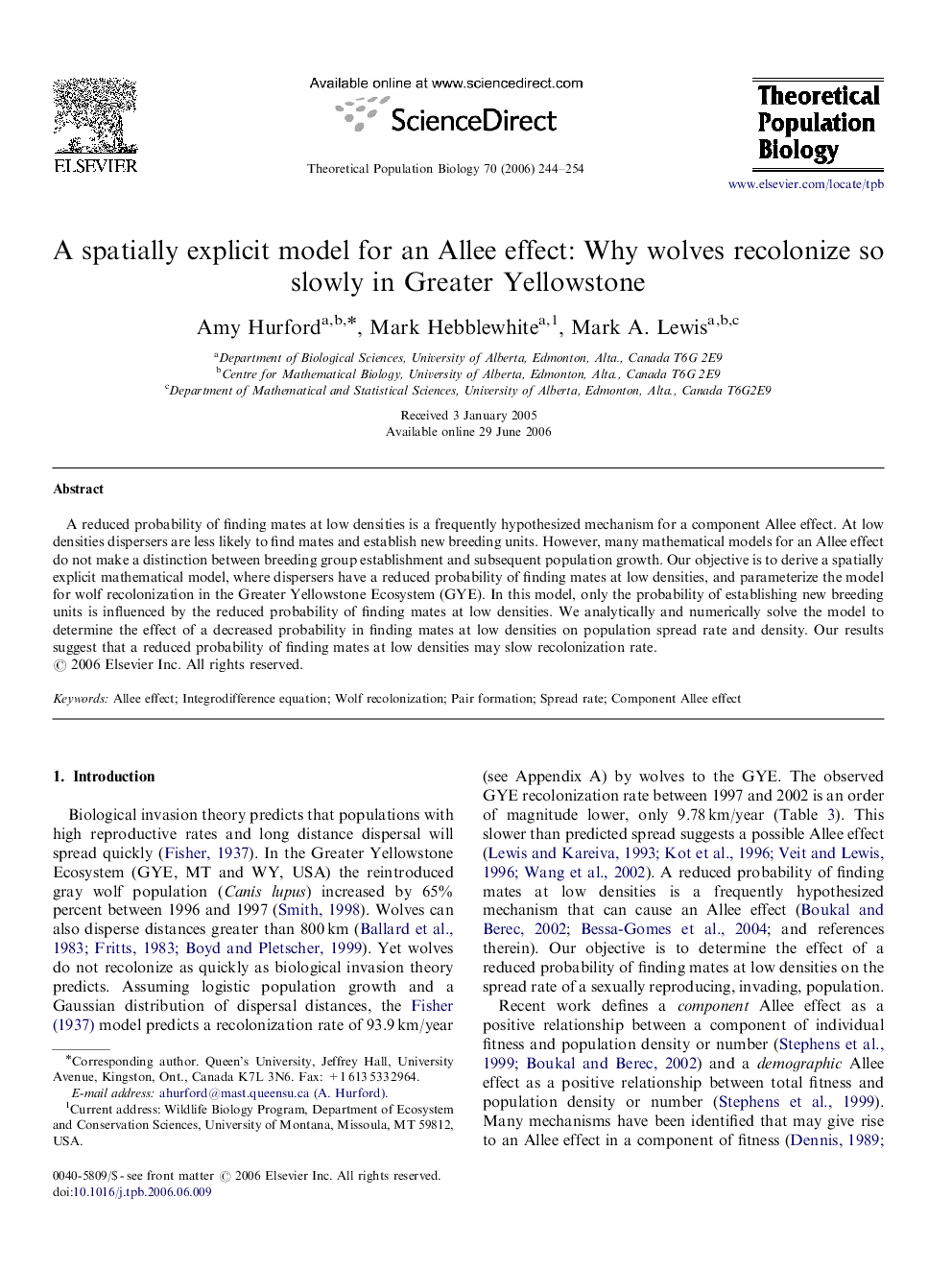| Article ID | Journal | Published Year | Pages | File Type |
|---|---|---|---|---|
| 4503022 | Theoretical Population Biology | 2006 | 11 Pages |
A reduced probability of finding mates at low densities is a frequently hypothesized mechanism for a component Allee effect. At low densities dispersers are less likely to find mates and establish new breeding units. However, many mathematical models for an Allee effect do not make a distinction between breeding group establishment and subsequent population growth. Our objective is to derive a spatially explicit mathematical model, where dispersers have a reduced probability of finding mates at low densities, and parameterize the model for wolf recolonization in the Greater Yellowstone Ecosystem (GYE). In this model, only the probability of establishing new breeding units is influenced by the reduced probability of finding mates at low densities. We analytically and numerically solve the model to determine the effect of a decreased probability in finding mates at low densities on population spread rate and density. Our results suggest that a reduced probability of finding mates at low densities may slow recolonization rate.
